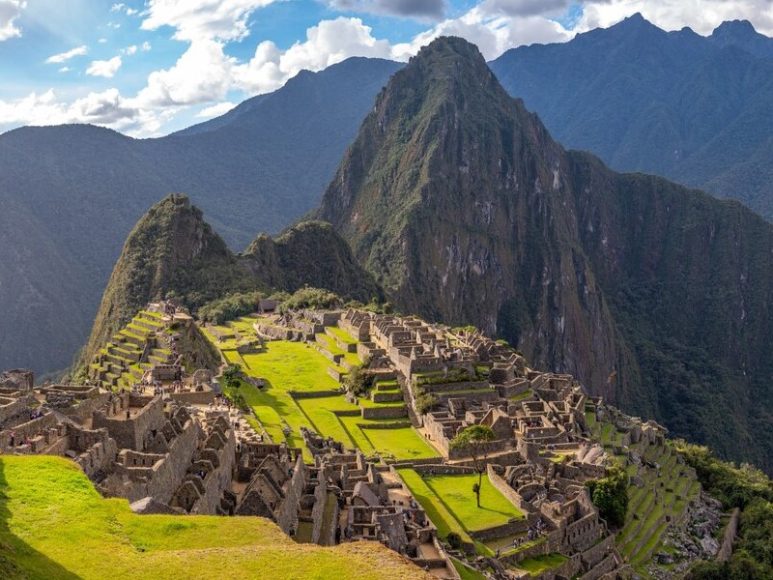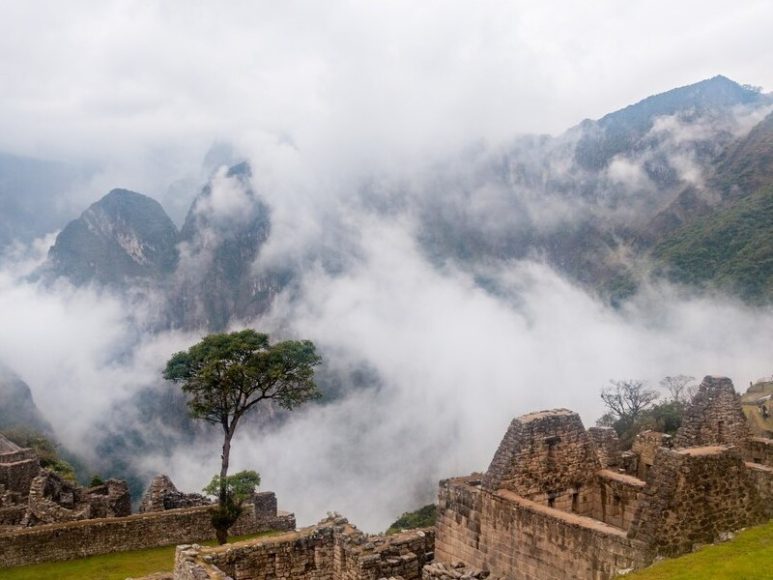How Long Is The Hike To Machu Picchu – 2024
Introduction – Machu Picchu
Along with seeing Peru’s beautiful scenery, hiking to the legendary Machu Picchu is a once-in-a-lifetime chance to experience the lost world of the Incas. The most famous Inca trail, which is now one of the most famous walks in the world, usually takes 4 days to finish and is 26 miles long. This hike blends the beauty of nature with the interest of history. It goes through beautiful green slopes, higher mountain passes, and old ruins like the famous Sun Gate. People who want to go hiking should also think about how long they want to go, how fit they are, and how to get used to the altitude. It can be more than 13,000 feet above sea level. Even though I carefully plan my trip, I still need to get a pass, which is usually sold out months before the trip. Besides my clothes, I need to pack things that will help me in different types of weather. No matter how much you like the Andes or the secret of Machu Picchu’s castle, the hike will not let you down. Its best part is seeing the beautiful morning from the Intiwasi, which you will never forget.

Factors Influencing the Duration – Machu Picchu
Choice of Hiking Route: The route you choose is the foremost one on the list of reasons that dictate the length of your hiking trip. On every path, users find a different experience depending on that particular trail’s size and difficulty level.
The Inca Trail: A prominent way, lasting around four days and developing about 26 miles with different grades from moderate to complex. It includes short and flat parts and has an elevation of up to 2600 feet. For that reason, it involves acclimatization.
The Lares Trek: Culturally immersive 4-day hike between local village locals and landscapes as beautiful. Variables depend on your route choice, but you should be prepared for any kind of weather.
Alternative Routes: Determining your preferred trail can be done based on the durations and kinds of experience, and these are available on routes like the Salkantay Trek and the Choquequirao Trek, which start from 4-8 days.
Hiker’s Physical Fitness and Pace: Your physical condition should be considered. A well-trained hiker with good stamina may cover eleven miles faster than one less used to such challenging activities. Evaluate your physical match, and start slowly at the beginning of the hike to stay in rhythm for the entire journey.
Weather Conditions: Weather cannot be calculated effectively and may significantly affect your hiking time. The months spanning from April to September in the dry season offer the best conditions, whereas October to March (the wet season) can be challenging because of rain and slippery paths. You are because having weather that will favor your walk and ensure that your hike will be comfortable and fun is the wisest thing.
Time Spent at Sites Along the Way: The trip to Machu Picchu includes many archaeological artifacts to explore and breathtaking natural displays. These spotlights should be allocated time and money for doing so; this will, in turn, make your hiking adventure incredibly more enjoyable but also will speed up the rate at which it will take. Trying to find a balance between embracing history and moving forward is a tricky task.
You can prepare well for a hike to Machu Picchu that suits you by considering the number of hours it can take, the weather, and the culture you can experience. Be reminded that the experience of covering a new and unique route is as vital as the final destination itself. Take some time to enjoy the route’s scenery during your trip, which will make your experience of the dynamically changing natural wonders unforgettable.
Popular Hiking Routes The Inca trail to Mach Picchu is camping that leaves the participant way beyond the physical excursion. Instead, it metaphorically connects the modern adventurer with the ancient Inca civilization through time. Here’s an expanded look at this iconic trek: Here’s an expanded look at this iconic trek:
The Kuychi Waynantaq, or the Inca trail, commences in the mountain range known as Kuychi Punaka or Huanusaura. The trail crisscrosses through the rugged Lares and Paruna mountains, follows the course of four or five rivers, and passes through the ruins of at least two Inca constructions before culminating at Machu Picchu.
Duration: The Classic Inca Trail covers four days, while other variations may extend the length of the trek.
Distance: It is about 26 miles in length (42 kilometers). The trail conveniently flows through the Andes.
Difficulty: It varies from moderate to strenuous and involves slopes with red gradients and high altitudes.
Highlights: The walkway is guided by old Inca gardens, each with its story yet to be revealed. The Sun Gate gives you the first optimum view of Machu Picchu, which resembles the golden colorado at sunrise.
Permits: Overcrowding is the inevitable consequence of limited and superficial regulation when you have up to 500 tourists, guides, porters, and a cooking staff-issued permits daily.
In-Depth Trail Experience
Cultural Immersion: The range of hikes will reflect the remains of the Inca Empire, including Llactapata ruins and Runkurakay pass, as well as the urban remains of the mythical city, Phuyupatamarca, ‘the Town in the Clouds.
Natural Splendor: Machu Picchu
Along the way, admirers of nature will experience various environments from cloud forests to the end of alpine tundras. The scenery will offer amazing views of snow-capped mountains and lush valleys.

Physical Challenge – Machu Picchu
The trek higher and higher you get to the top, known as Dead Woman’s pass draws attention that requires a lot of endurance.
Guided Knowledge– Machu Picchu
Seasoned guides give information on the Inca historical past and customs that are the main plus for such traveling, making it so fascinating with unique stories and legends.
Logistical considerations – Machu Picchu
Booking in Advance:
The reserved permits and the peak season of May to September over the past years are the primary reasons you should book your reservation at least a few months in advance.
Preparation:
To be successful, it’s necessary to prepare well. Getting acclimatized to the high altitude and packing essential gear are the keys.
Sustainability:
The government of Peru passes the descending appointment system to conserve the trail and its range by minimizing the daily effect of tourists.
Post-hike reflection – Machu Picchu
Arrival at Machu Picchu:
The whole Inca trail terminates at the most beautiful view of Machu Picchu, the same place that reminds people of the engineering competence of the ancient Inca and a beauty spot that also became listed as a world heritage site by UNESCO.
Personal Achievement:
From a first-time hiker to seasoned visitors, hikers indicate that this experience is life-changing a personal victory that establishes a bond with nature and the past.
The Inca Trail is more than a hike. it’s a spiritual journey to the most fascinating place on earth, and it will take you on a path of such amazing adventure that its memory will burn in your mind forever.
Lares Trek
The Lares Trek represents an unrevealed setting, a breathtaking alternative to the ordinary Inca Trail, where hikers can experience the inimitable engagement with Andean culture and the remarkable scenery of the Peruvian wilderness. Here’s an expanded look at the Lares Trek and other alternative routes to Machu Picchu:
Lares Trek
Duration:
The excursion typically runs for around four days; however it can be extended or even extended depending on the route and speed.
Features:
Besides being one of the most famous treks in the world it is also a great place where locals and their Andean traditions may be observed. Visiting hikers communicate with the inhabitants and sometimes imagine the traditional wearing and farming process.
Scenic Landscapes:
The ride is fantastic, for it passes by the unique nature, from verdant valleys to high mountain passes. The view is mind-blowing and you feel the presence of the Andes every moment.
Difficulty:
The route difficulty may change depending on selection. There are several variations of the Lares Trek, each with its unique challenges and attractions: There are several variations of the Lares Trek, each with its unique challenges and attractions:
Route 1: From Lares to Patacancha, commonly referred to as the ‘weavers’ way one must along with 33 km of trails, cover this distance in 3 days.
Route 2: Along with the trek from Quishuarani to Patacancha, it is also moderately tricky.
Route 3: To Quishuarani or Yanahuara, the highest point which is a tough climb but worth the view.
Route 4: Huaran up to Yanahuara, which is described as a problematic traverse with extensive experience at high altitudes.
Other Alternative Routes
The Salkantay Trek is a 5- to 8-day stretch that takes hikers through the Mollepata Valley the Salkantay Mount and into the cloud forests location before finishing around Machu Picchu. It’s a challenging route with lovely ecosystems and stunning sights.
The Choquequirao Trek:
A 4-day adventure to choose the sister-place site of Machu Picchu Choquequirao. This off-the-beaten-path trek is for adventurers seeking small-group experiences in undiscovered Incan ruins.
The Ausangate Trek:
The 5-day circle trek of Mount Ausangate, the peak that tops the Cusco region and is noteworthy for its hot springs and Rainbow Mountain.
The trails vary from one another and offer you the best way possible to value the incredible natural and cultural assets of Peru bringing you closer to the fabulous Machu Picchu. These routes provide ample opportunity to enjoy a scenic trip through the frozen world either cultural enrichment physical challenge or the serene beauty of the environment. Remember to consider things such as your physical fitness, acclimatization to altitude and people’s preferences which will later influence your choice of trek. The choice of roads you will take is still unclear but it is undoubtedly a lifetime adventure.

Conclusion – Machu Picchu
In conclusion Machu Picchu is a multi-day journey that can be adapted to any traveler’s specifications from a two-day trip to a day-long hike. The Full Inca trail the most preferred one is usually completed within four days walking about 25 miles. This outing lets hikers pass challenging groundwork up to the Sun Gate which overlooks Machu Picchu. However remember the stunning views and the fascinating history on your way. It is vital to ensure proper preparation considering features such as altitude and fitness skills along with permits that would be required for this. Finally the expedition to Machu Picchu is a unique trip of a lifetime where you will appreciate the natural beauty and briefly learn about the history of the Incas.
